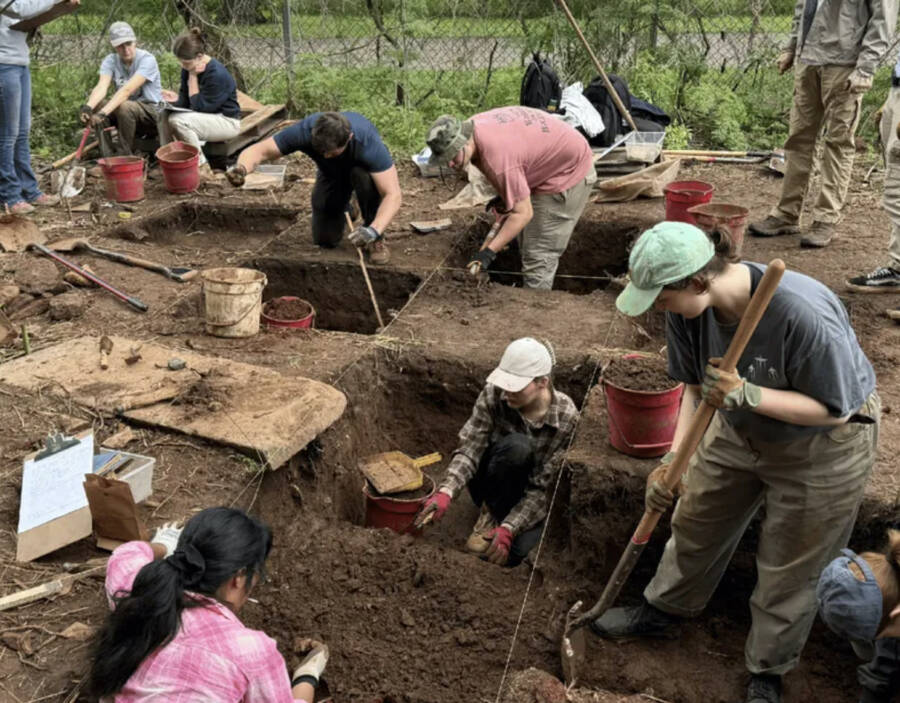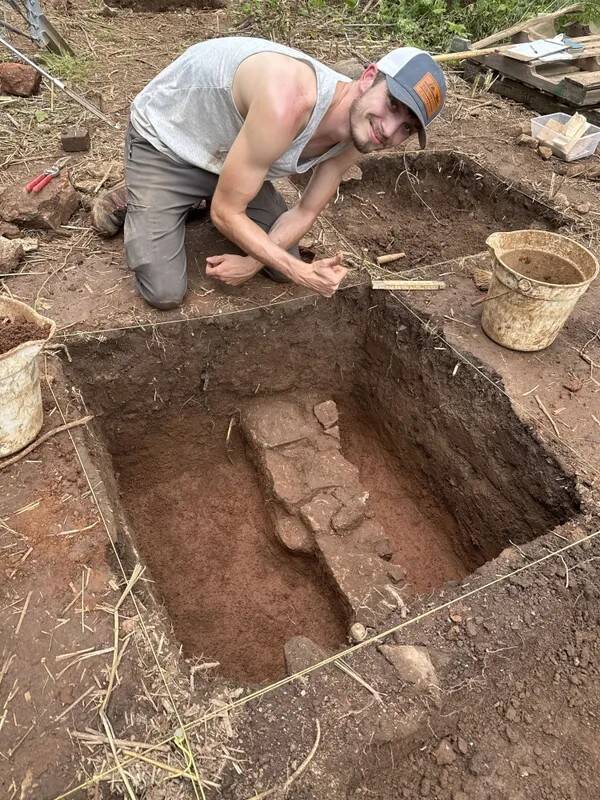In some of their final days of excavation at a Springfield dig site, these 20 undergrads helped unearth the foundation of the William Townsend house, a pioneer home built upon his arrival in the area in 1832.

Missouri State UniversityMissouri State students participating in a three-week field school helped unearth the remains of the William Townsend homestead in Springfield.
Archaeologists and students from Missouri State University have uncovered one of the state’s earliest homesteads at the McKenzie-Townsend archaeological site in Springfield.
Two previous excavations at the site had unearthed Civil War-era buttons and other 19th-century artifacts, while the actual home these objects belonged to had yet to be discovered. Now, the exact location of the home, known as the William Townsend house, has been determined and its foundation has been uncovered.
Considering that this homestead dates all the way back to the 1830s, much of the archaeological evidence remains well intact, providing an even deeper look into the lives of early pioneers in Missouri. Work at the site has paused for now, but with more to find at the site, archaeologists will return.
Archaeology Students Help Discover The William Townsend Homestead In Springfield

Missouri State UniversityArchaeologists found the foundation of the interior wall to the homestead.
The discovery of the William Townsend house was the result of a three-week field school led by Missouri State University’s Center for Archaeological Research (CAR). A group of 20 undergraduate students were led by two archaeologists to acquire hands-on surveying and excavation experience.
The McKenzie-Townsend site had been excavated before, once in 2008 and again in 2012, according to a statement from Missouri State. These excavations revealed some evidence of a homestead nearby, including Civil War buttons and ceramics from the 1800s.
Kevin Cupka Head, director of CAR, said he wasn’t “entirely optimistic that we’d find anything substantial” at the site during the three-week session. This was almost the case, as it wasn’t until the third week that they came upon their incredible discovery.
The team was able to find the foundations of the William Townsend house, which archaeologists believe was built sometime in the 1830s. It stands as one of the earliest homesteads uncovered at the site.
Archaeologists found a 10-foot section of the foundation of the homestead’s interior wall. The team also identified nails, suggesting that wooden floorboards had been used in the house.
Furthermore, researchers found ash, ceramics, and other debris near the foundation, which they believe could be sweepings that fell through the cracks of the wood flooring.
“It’s neat. You don’t really find sites this early with so much intact,” Head said. “It offers a glimpse of daily antebellum life in Springfield.”
Indeed, not many buildings from this period are still standing. As Head told the Springfield News-Leader, this kind of discovery in the area is rare.
Why The William Townsend House Holds A Special Place In Missouri’s History

Missouri State UniversityAlong with the foundation, archaeologists found ash, ceramics, and other debris at the site.
The William Townsend house is named after one of the early landowners in the region. The archaeological site’s other namesake, Alexander McKenzie, was another notable early 1800s landowner in the newly-minted state of Missouri.
Townsend came to Missouri from Tennessee in 1832, bringing his family and several enslaved people with him. It’s believed that the Townsend family lived on this land until about the 1850s.
“It’s always really helpful to find these domestic settings, the way people were living their day-to-day lives,” said Head.
The discovery of Townsend’s homestead corroborates historical records and other artifacts found at the site. While work at the McKenzie-Townsend site has paused for now, Head and his team of archaeologists plan to return.
Reportedly, there is a lost pioneer cemetery at the site. Archaeologists would like to locate it so that it can be studied and eventually moved in order to help preserve it.
In the words of Head, archaeology is “not so much about going into jungles and discovering lost cities. It mostly involves going around our backyard and making sure we’re doing what we can to protect historic sites and cultural heritage threatened by development.”
Head also said that, in addition to conducting more digs at the site, he would like to display recovered artifacts at CAR for the public to enjoy.
“The more public archaeology experiences we offer, the more we can inspire community interest and involvement,” said Head. “There’s so much out there to protect, preserve and identify, so bringing the public on board as partners and stewards of cultural resources benefits us all.”
After reading about this newly discovered Missouri homestead, take a look at these photos of Nebraska’s early settlers. Then, learn about how archaeologists uncovered the foundations of the historic Williamsburg Bray School in Virginia.





